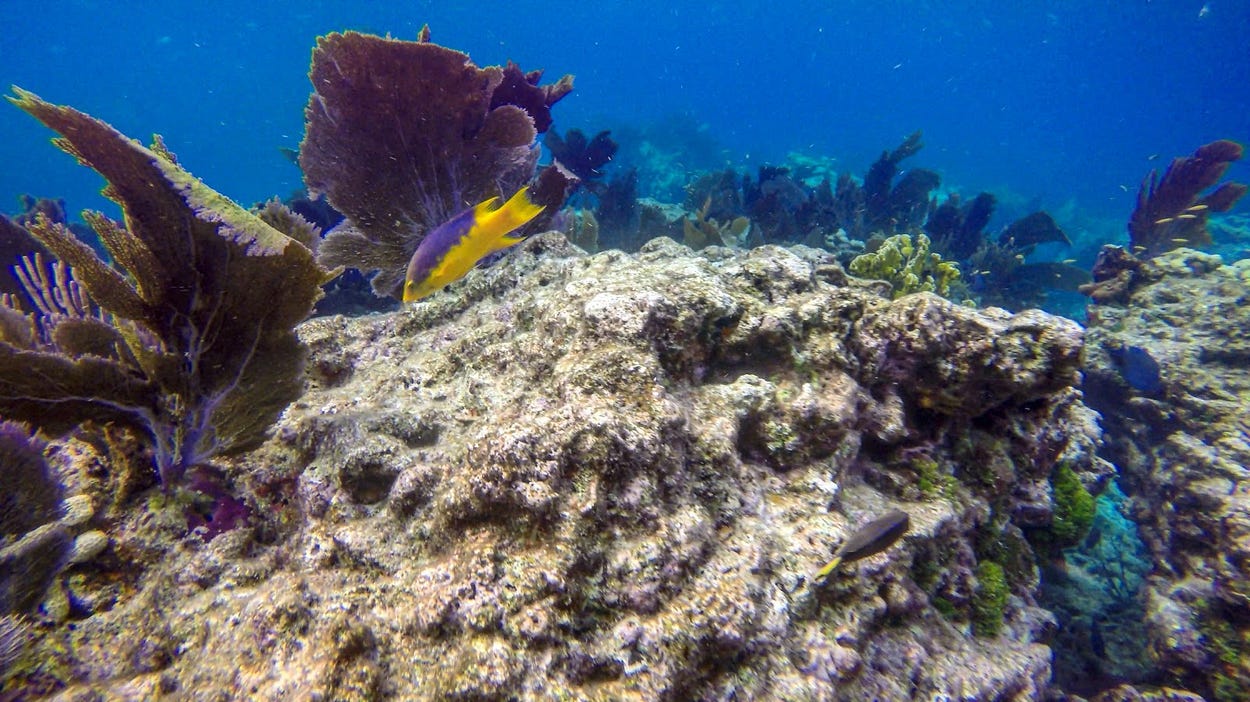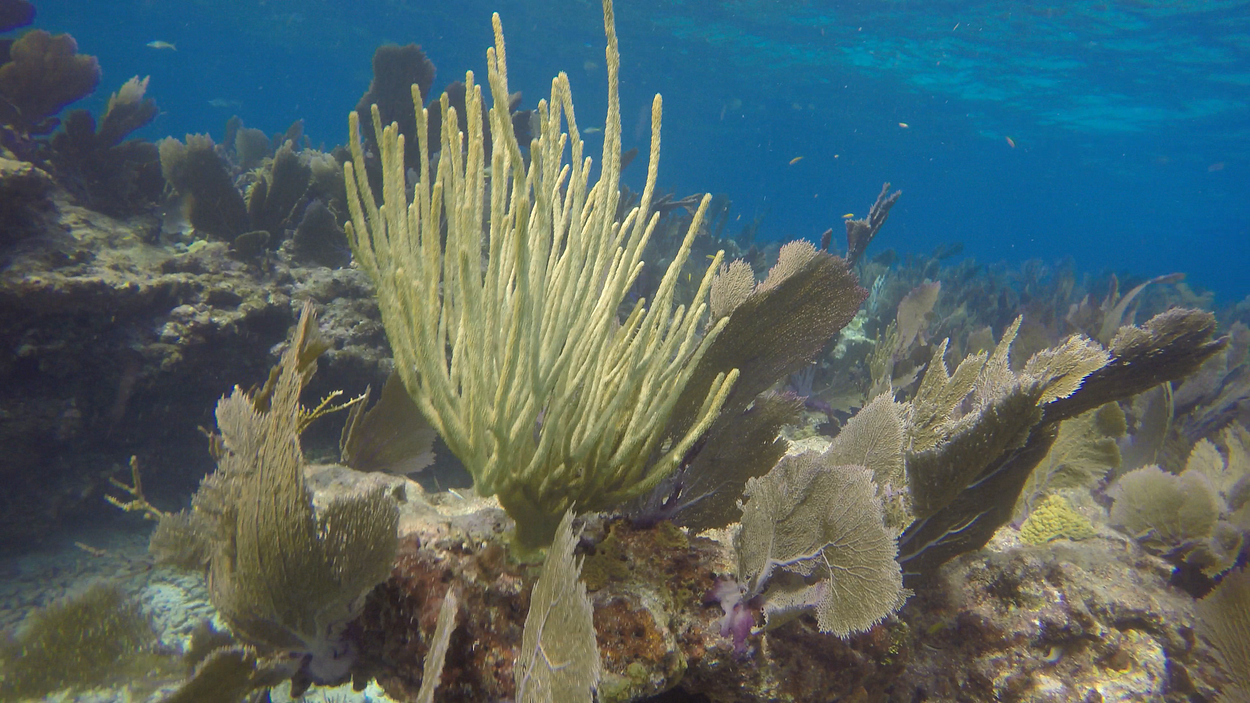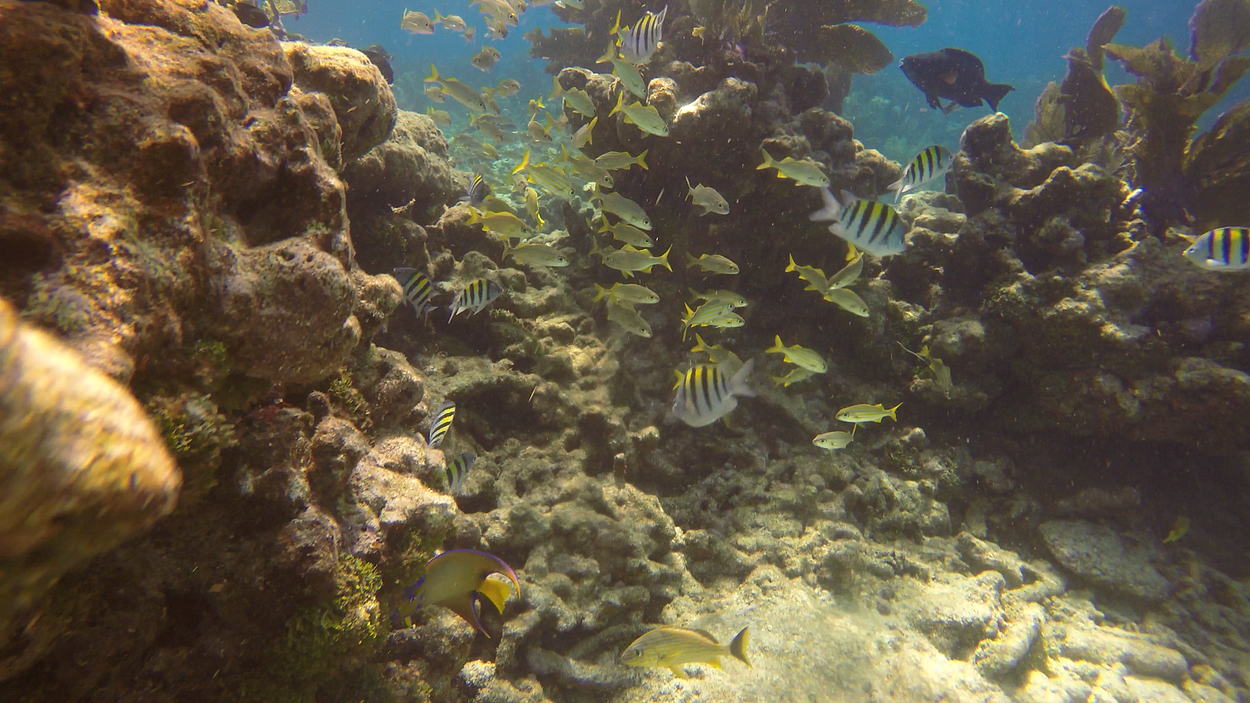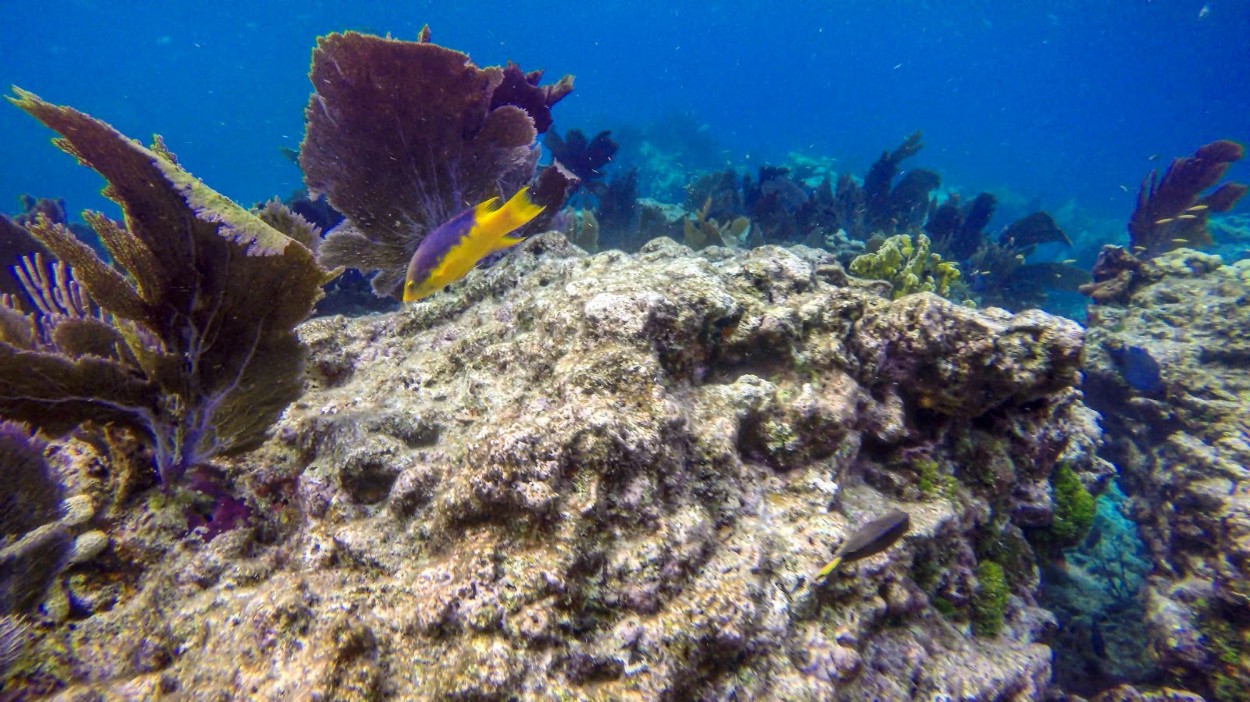
By Courtney Cox | gargoyle@flagler.edu
Coral reefs aren’t dead—yet. Bleaching doesn’t mean death for them, but it does mean they’re struggling. Corals are struggling to thrive in the ever-warming oceans that Mother Nature intended for them.
Their struggle could mean the demise of one of the greatest ecosystems on the planet.
“Coral reefs support more species per unit area than any other marine environment, including about 4,000 species of fish, 800 species of hard corals and hundreds of other species,” according to NOAA (National Oceanic & Atmospheric Administration) Ocean Service Education.
Climate change, no longer up for debate on its existence, has increased sea temperatures contributing to the ongoing bleaching issue.
If bleaching doesn’t mean the coral is dead, why is it such a serious consistent topic in environmental news? Bleaching can indicate that the coral is in poor health, which may lead to its death, and what that means for people is a lot more than just a colorless ocean floor.
What people may not realize, is that corals are in fact animals too. Yes, according to Dr. Cliff Ross, University of North Florida Biology Department chair and professor, corals are “like a colony of jellyfish living together.”
This “colony of jellyfish” has a symbiotic relationship, where both sides benefit from each other with zooxanthellae, a form of algae. Their relationship with one another is vital in their harmonic existence.
“So, when an animal (the coral) is just undergoing its normal physiology or metabolism it has a lot of waste products and the algae can take up those waste products (that’s a food for the algae), and the algae get a place to live, but the algae can photosynthesize just like plants and when they photosynthesize they make oxygen,” Ross said, “and also when they photosynthesize they make sugars—that’s really what plants do. And then the coral actually gets that as like a free lunch or dinner.”

But when something goes wrong in the environment, the relationship between the two becomes unsteady as it takes on stressors like the warming water temperatures.
“So when the ocean gets warm, what happens is the symbiosis, the relationships between the corals and the algaes, starts to break down and so the coral for whatever reason will start to kick out the algae and some people believe that when the algae are stressed, they produce toxins and the coral doesn’t want them anymore so it kicks them out,” Ross said.
The algae are what give the reefs their colors; they’re the one’s that contain pigments. This is why it’s called coral bleaching, because the color of the corals becomes bleached once the algae have left them, or even when the algae are still there and begin losing their pigmentation, Ross said.

“So what’s happening is as the corals get stressed and there’s a lot of pollution in the environment the corals are dying and an algae is starting to grow all over the place and what’s happening is there’s not a lot of fish around anymore,” Ross said. “You know a lot of fish are overfished and these fish are responsible for eating the algae, but if there’s no fish around or even other things like sea urchins that should eat the algae there’s a problem. And so all of the sudden this nice coral reef is starting to turn into an algae reef.”
The problem is though, that too much algae results in things like harmful algal blooms or more commonly known as red tide.
Ross works specifically with coral larvae and looking at the impacts of climate change on the baby corals.
“So we look at things like pollution on the environment or how temperatures are getting warmer or what’s happening with the increase in carbon dioxide levels and how that impacts the babies,” Ross said.
In the Florida Keys, specifically, Ross goes down about once a year for research. Within the past 30 to 40 years, the Keys have lost 80 to 90 percent of its corals, he said.
The Florida Reef Tract rests among that percentage as it stretches 360 miles along Florida, from Martin County all the way down to the Dry Tortugas. It is the third largest barrier reef in the world.
The services this reef provides, and coral reefs in general provide, are inexhaustible and the cash flow they bring in is endless.
”Coral reefs probably provide millions, if not zillions, of dollars of revenue coming into the state of Florida,” Ross said.“People want to pay to go scuba diving to look at all the coral reefs. The diversity is amazing.”

The reefs provide more than just a pretty sight though. They have the structure and ability to lessen the impacts of storm surges, while also allowing people to make a living.
“Coral reefs can take the energy out of the waves so the waves aren’t washing away the coastline so I mean they prevent erosion, they promote fisheries, they provide jobs for people that are fishermen, they provide tourism, and geez there’s so many positive services, it’s crazy,” Ross said.
For the Florida Reef Tract alone, among Martin, Palm Beach, Broward and Miami-Dade counties, it’s estimated its coral reef activities bring in $3.4 billion in sales in general and income, while supporting 36,000 jobs in that region a year, according to NOAA’s 2017 Coral Reef Information System.
One of the “greatest” reefs producing sizably the most revenue is the Great Barrier Reef, so large it can be seen from outer space. It’s depleting at an astonishing rate, with a third of it being lost already, said Kayla Ripple, the science program manager at the Coral Restoration Foundation.
Ripple has been developing and researching new techniques to grow corals on the reefs.
“The Great Barrier Reef is impacted the most in northern parts because it’s closer to the equator,” Ripple said. “There are spots still doing really well.”
Climate change has played the biggest role in coral bleaching, Ripple said, which is why the very warm temperatures along the equator are having such an impact on the Great Barrier Reef.
Ripple and Ross could not emphasize enough on how much coral reefs provide for people and the environment. Marine natural products, were listed among the services reefs provide by both Ross and Ripple.
“Natural products are a rich source of pharmacologically-active compounds. The problem is: they are often difficult to purify and identify,” according to Hannah Kerr in her 2017 article for the Society of Chemistry.
This “new wave of drug discovery” is potentially offering new medical and cosmetic breakthroughs.
“There’s different compounds in corals that have anti-cancer properties, anti-viral properties, anti-fungal properties … even the cosmetic industry,” Ross said.
Corals could be saving people, but it seems that people can’t save the coral.
“People at this point, in terms of dealing with corals, they’re not trying to figure out solutions, they’re accepting the fact we have a really bad problem and a lot of the corals are dying at an alarming rate and people are trying to figure out, ‘What are we going to do about it?’ Ross said. “Everyone’s kind of accepted that we’re screwed.”




Be the first to comment on "Coral bleaching: The breakdown, research and road to rehabilitation"